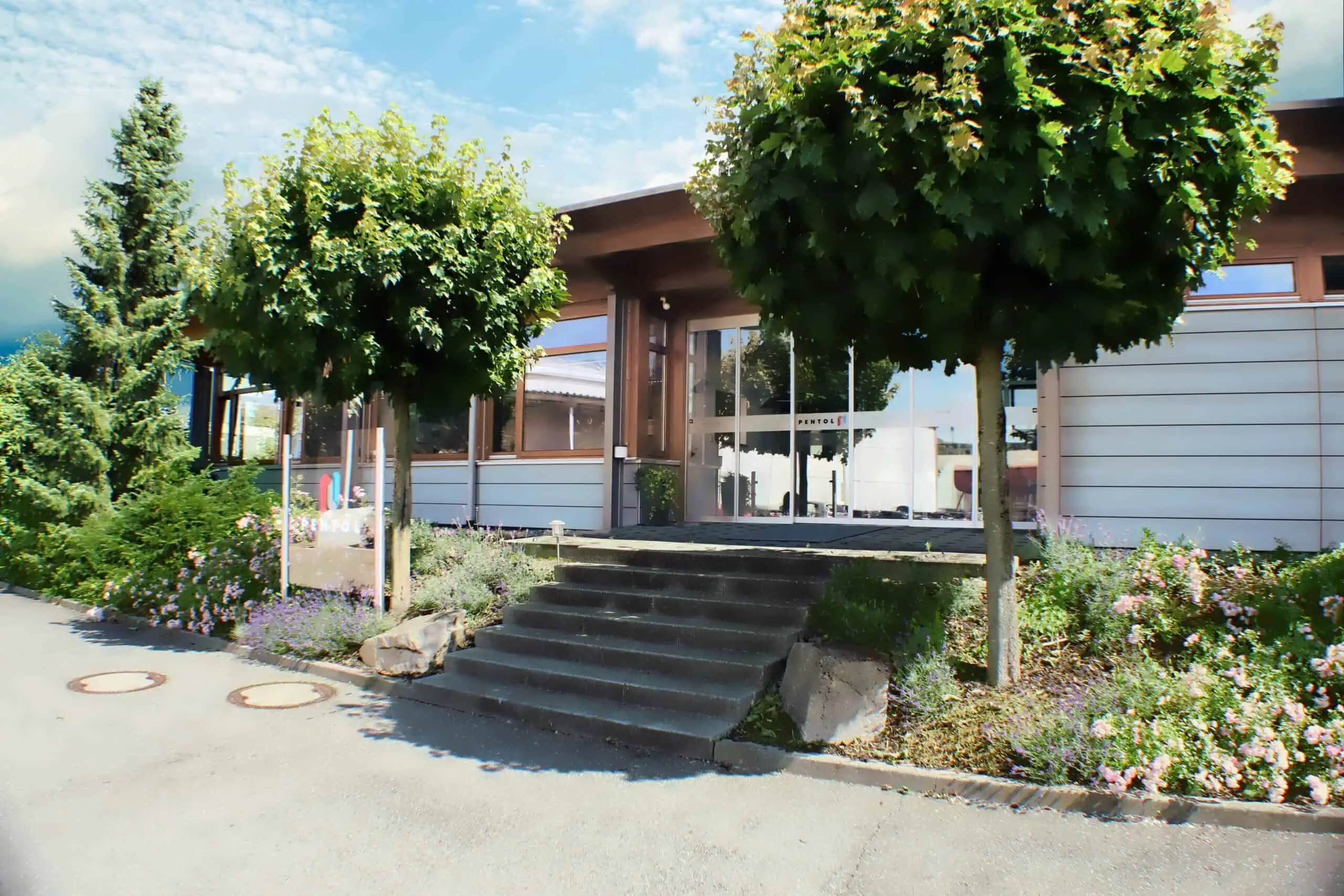
Operator’s support in monitoring of emission levels to prove compliance with standards and/or to control emission reduction installations (desulfurization, denitrification, dust precipitation, mercury removal and others) as well in optimisation of combustion and other process (metallurgy, refineries, paper pulp, cement, glass, mineral wool etc.).
The following gaseous pollutants can be measured: CO, NO, NO2, N2O, SO2, HCl, HF, NH3, CO2, CH4, Total Organic Carbon (TOC), H2S, Total Reduced Sulphur (TRS), Hg as well as O2 and H2O as reference gases.
Measure methods, types and location of instrument are individually selected to assure optimum results of measurements, compliance with legal and normative requirements and (last but not least) to keep cost of the system on justified level.
Except of the instruments scope of delivery contains all components necessary to create complete measurement system: sampling system, cabinets or racks, shelters, power and instrument air distribution, data acquisition system including processing, recording, presentation and compliance reporting.
Scope of offered services is agreed individually and can be extended to turn-key basis.
All available methods of continuous measurement can be used, depending on process, legal requirements and technical conditions on site.
Pentol will advise the most appropriate solution in each individual case.
There are two general approaches to monitoring emissions from exhaust or process gases: in-situ or extractive analysis.
In-situ analysis involves mounting the analyser directly on the stack or gas duct.
Extractive analysis involves transporting the sample from the stack/duct, performing the necessary sample conditioning (filtering and drying if required) and finally delivering the sample to the analyser.

The main advantage of in situ concept is taking measurement in natural ambience of the gases which means that composition of gases is not affected by transport and conditioning of the sample – it often helps to avoid significant measurement error.
In situ instruments are usually compact and cheaper. Due to simplicity of their construction in situ instruments require usually less maintenance. There are, however, some limitations of application of in situ concept: harsh process conditions inside the stack/duct (like e.g. very high or low temperature, very high dust concentration); also in case of high stack access to the instrument is difficult and it obstructs commissioning and maintenance works. In some cases in situ instruments are not the best solution to measure very low concentrations.

Extractive systems are usually more complex and more expensive than in-situ analysers. They always require the installation of a probe to take the sample and heated filter dust as well as a heated sample line to deliver the sample gas to the analyser located in a dedicated shelter or any other room assuring stable temperature conditions. This makes maintenance easier, and safer to perform.
Extractive systems are available in two versions: hot/wet or cold/dry. The first option allows to connect the analyser directly to the sampling line. This is critical for instruments measuring soluble in water gases like HCl, HF or ammonia. Hot sampling prevents from dilution of measured gas in condensate produced during cooling of the sample. It allows to use hot sample gas analyser to measure in one instruments most of polluting gases, also at low concentrations. Also moisture content in the sample can be measured this way.
If scope of measurement does not include soluble gases the cold/dry method can be a good option.
Optimum choice of measurement method and selection of the most suitable instruments is always an individual matter and Pentol specialists do it after thorough evaluation of all conditions.
Most of gases can be measured by infrared (IR) and ultraviolet (UV) spectroscopy, both in in situ and extractive options. Each instrument of this type contains a radiation source and a detector measuring radiation intensity after passing the measurement zone. In most cases a non-dispersive measurement technique is used employing phenomenon of infrared or ultraviolet absorption of each measured gas by specific for each individual gas wavelength of radiation. Such method is called using abbreviations NDIR or NDUV respectively.
NDIR method is more universal because most of gases can be measured this way using single instrument. Ultraviolet waveband (NDUV method) cannot be used to measure CO, CO2 or H2O, however some gases can be measured more precisely. In practice it means that NDUV instruments are used for process purposes, rather than for complete CEMS.
There are, however, some other technical solutions based on infrared spectroscopy: analysers using Tuneable Diode Laser Absorption Spectroscopy (TDLAS) and Fourier-transform infrared spectroscopy (FTIR).
Flame ionisation detection (FID) is a method of measurement of total organic carbon (TOC). Sample is burnt in hydrogen flame and value of ionisation current is proportional to content of all components containing organic carbon. TOC measurement is commonly used as a part of CEMS in waste incinerators and cement plants, as well as for process purposes in chemical and petrochemical industries.
Solid particles are commonly measured using two versions of visible light spectroscopy:
Cross-stack absorption method measuring attenuation of light after passing the measurement zone (the higher dust concentration the lower optical signal); this method can be used for widest range of measurement path and of dust concentration values;
Scatter method measuring intensity of light dispersed or reflected by dust particles (in contrary to above, the higher dust concentration the higher optical signal; this method gives good results for small stacks and low concentrations only.
Gas velocity (or voluminous flow) can be measured with various methods.
Three most popular are as follows:
Ultrasonic – measures change of ultrasonic wave velocity influenced by velocity of measured gas;
Infrared correlation – detects correlation of natural IR radiation of gases by two sensors located along the gas flow; this is a very convenient method of measurement with one limitation only: gas temperature must exceed 70°C;
Pressure difference method – static and dynamic pressures are simultaneously measured in the probe in gas stream; the difference signal allows to calculate gas flow.
Above specification covers the most commonly used instruments.
There are more of them in the portfolio of Pentol and the right choice will be done by our specialists after receipt of necessary information.
Benefits
Pentol is the system integrator and offers all types of instruments and measurement techniques from many leading manufacturers:
Codel International (UK), Dr. Födisch (Germany), Fuji International (Japan),
Durag (Germany), Envea (France), Durag (Germany), SK-Elektronik (Germany),Siemens (Germany), NEO Monitors (Norway), Enotec (Germany) and others; it allows us to offer optimum solutions for virtually all projects – based on evaluation of needs, not on availability of instruments in our portfolio
Instruments have internationally acknowledged certificate if required; it is also possible to register the instrument if legislation of any country requires it
Concept of the system is in each case adjusted to specific needs of the Customer and legal requirements
Extractive instruments, sample conditioning systems and elements of data acquisition are installed in compact racks or cabinets, if necessary equipped with air conditioning
Display and reporting software can be translated into User’s language
Connection of the system to internet or a GSM modem enable remote access from Pentol’s or Manufacturer’s service centres; it allows quick and efficient support in case of any trouble
We need to get in touch personally.
Questions regarding function, support, and sales are answered by our team of experts from Poland via e-mail to pentol@pentol.pl, as fast as possible. (Tel.: +48 12 686 36 86)

Pentol offers a detailed initial consultation to verify compatibility with your process. Each application is unique




